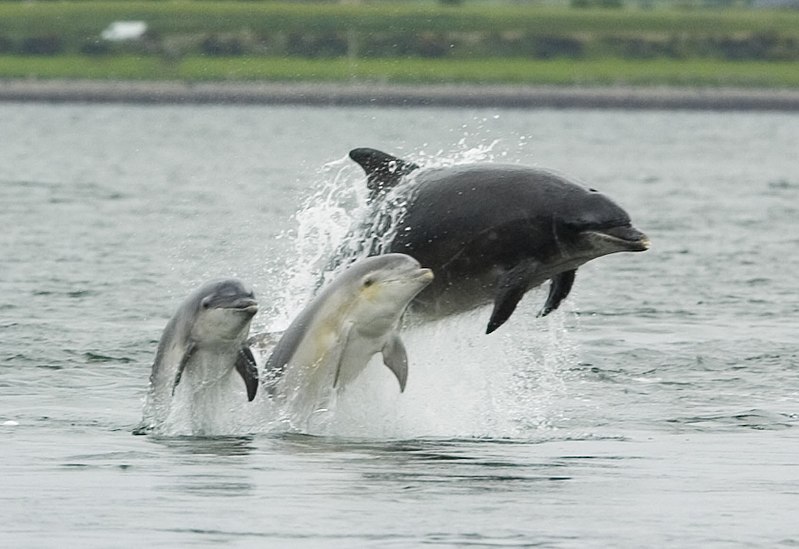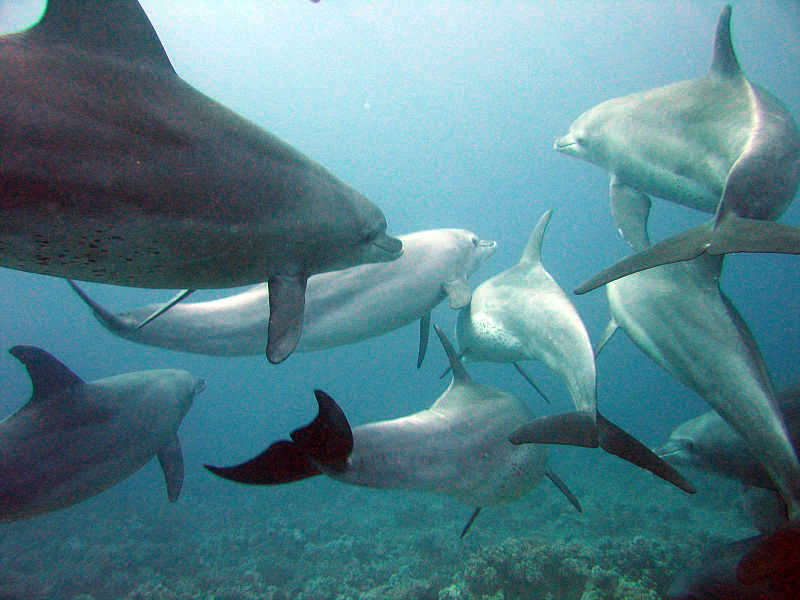Researchers seeking clues in ‘unprecedented’ dolphin die-off // VIDEO, MAP, PHOTO GALLERY
Dolphin mystery

Bottle-nosed
dolphin Roux, right, clowns around with his friend Jett at Gulf World
in Panama City Beach. Roux was rescued from Louisiana and participates
in a few of the dolphin shows, while Jett was born at the marine park.
Heather Leiphart | The News Herald
Heather Leiphart | The News Herald
Published: Saturday, July 27, 2013 at 18:03 PM.
“The length and the severity of this event is unprecedented in the Gulf,” said Chris Robbins, a scientist and senior manager for restoration planning with Ocean Conservancy. “More than 1,000 animals have stranded and more than 95 percent of those have been dead. … The mortalities we’re seeing are far above what the historical average has been.”
Under the Marine Mammal Protection Act, the National Oceanic and Atmospheric Administration (NOAA) declared an Unusual Mortality Event (UME) in December 2010 for dolphins in the northern Gulf of Mexico, the area from the Texas/Louisiana border to Franklin County.
Since the event began in February 2010, 1,026 strandings have occurred through July 21. The event is the most severe ever recorded in the Gulf, with 95 percent of strandings ending in mortality.
“It’s the longest in duration and highest number of strandings in the UME program,” said Erin Fougeres, Marine Mammal Stranding Network Program administrator for NOAA. “In this case, this unusual mortality event has been going on since just prior to the oil spill.”
By NOAA definition, a UME is “a stranding that is unexpected, involves a significant die-off of any marine mammal population and demands immediate response.”
But, response is difficult when the cause of the UME is still unknown.
Click for video
See more photos
Interactive map
Oil’s role
Although the UME began two months prior to the 2010 Deepwater Horizon oil spill, researchers are not ruling out oil dispersant as a factor.
“This unusual mortality event actually started before the oil spill in February 2010, but when the oil spill happened there was a spike in strandings, and they’ve been high ever since,” Robbins said. “It does raise aquestion to the extent of which the oil spill has exacerbated the UME.”
Robbins said many of the symptoms observed in the stranding events are consistent with those of marine mammals that have been exposed to oil.
“What they’re seeing in these animals is a compromised immune system,” Robbins said. “It may be like a cancer patient with a compromised immune system coming down with something else because they’ve been exposed to a virus or some other type of contaminant.”
Experts are investigating what role brucella bacteria may have in relation to the UME. Thus far, 27 out of 107 dolphins were positive or suspected to be positive for brucella, a common cause of abortions in the marine mammals.
Some animals also are showing signs of pneumonia and adrenal gland abnormalities, Fougeres reported.
“We don’t have any definitive cause of the mortalities at this point,” Fougeres said. “There may not be any one thing that’s killing off the animals. There may be more than one factor involved.”
NOAA has formally recognized 59 marine mammal UMEs in the U.S. since 1991, but has determined cause for just 25 of them.
In the same timeframe, the Gulf of Mexico has seen 11 UMEs involving dolphins. Fougeres reported the most common cause of the previous events was morbillivirus, a highly infectious virus that includes agents of measles and canine distemper.
“We’re trying to rule out the most common causes of UMEs that have happened in the Gulf in the past,” Fougeres said. Morbillivirus “doesn’t appear to be the case.”
The highest number of strandings has occurred in Louisiana, followed by Mississippi, Alabama and the Florida Panhandle.
“Fortunately, for the Florida Panhandle, they haven’t really been too much above average since 2010,” Fougeres said.
Read More Here
***************************************************************
Photographer: Peter Asprey, http://www.peter-asprey.com/
Author
Serguei S. Dukachev
Author
: NASA













No comments:
Post a Comment
Hello and thank you for visiting my blog. Please share your thoughts and leave a comment :)